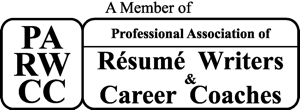iStockphoto.com | higyou
Congratulations! You’ve reached the end of a tough interview process and are on the cusp of a job offer. Now only one step remains – a background check. And yes, you should expect it – according to GoodHire.com, 72% of employers run a background check for every person they hire.
To most people the background check is just that – something that happens in the background of the job interview process with little to no transparency beyond a disclaimer and box to check consenting to such an investigation. Yet companies who go to the trouble and expense of running background checks tie job offers to the successful completion this final step.
What happens after you check the box giving a potential employer permission to run your background check? They typically go back seven to ten years, and may include any of the following:
Criminal record. There is much contention around these types of checks, and laws vary state to state on how a person’s criminal history can affect them during the hiring process.
Credit score and history. Regardless of the circumstances, poor credit makes it seem you will be a bad steward of company resources, is an obvious red flag for people applying for financial jobs, and even creates the impression you are more likely to steal from the company.
Employment verification. They’re not checking to find out what you did day-in-and-day-out at an old job. They’re checking to see if you told the truth.
Education verification. Same as above (yes, it matters – if you’d like to see a real-life example, check out the story of George O’Leary’s short tenure as head football coach of Notre Dame)
License/Certification verification. Same as above, especially if the role requires specific licenses and/or certifications (for example, if you’re a truck driver and need a CDL) and the applicant claims to have them.
Driving record. Employers do not want an accident-prone driver making deliveries, or someone with two speeding tickets a month driving around clients.
Reference check. Be smart about references; if you put someone down as a reference, 1) be sure to tell the person you have listed them as a reference, 2) make sure you know what your reference is going to say about you, and 3) provide up-to-date contact information.
Drug screening. Even though many people find it intrusive, several employers still drug test applicants to whom they are prepared to make an offer. Even if you live where marijuana is legal, it is still federally prohibited and you could be denied a job if you test positive for it. Research the laws in your state.
Social Media. Everything lives forever on the Internet, and while it may not be fair to be judged for some silly picture you posted eight years ago at somebody’s wedding, you may be.
In exchange, employers are required to adhere to an array of state and federal restrictions on background checks, that may include:
How they can use information gained in a background check when weighing candidates for a job.
Consent from the applicant to run a background check.
The number of years a background check can cover.
Reporting requirements that may include, but is not limited to, providing the applicant with the name of the agency doing the check and a free copy of the report.
Applicant salary histories. In a few states, employers can’t ask you what you’ve earned, only what you’re looking to make.
Ban-the-Box Laws (which restrict questioning/use of criminal history).
Your rights:
Employers must adhere to the Fair Credit Reporting Act (FCRA).
It is illegal to run a pre-employment background check on the basis of an applicant’s race, color, sex, nationality, religion, disability, or age.
Employers must get written permission from applicants to run a background check.
Employers must let applicants know how they intend to use the information in their credit report.
It is your right to know what is in your credit and other background check reports, and you have the right to dispute information in said reports.
If an applicant is denied employment due to something discovered during a background check, employers may have to inform the applicant in writing as to what exactly what was used from the investigation and provide a copy of any relevant documentation (e.g. credit report).
Needless to say, employers are not allowed to misuse your personal information in any way.
You have the right to withhold consent from an employer to run a background check, but they have the right to refuse your application if you do.
What is and is not allowed in a pre-employment background checks varies from state. Here is a great resource that will let you know the law in your state: Background Check Laws for Every State. And if you need legal advice, check with an attorney (disclosure - we’re not lawyers).
Philip Roufail contributed to this article.
Scott Singer is the President and Founder of Insider Career Strategies Resume Writing & Career Coaching, a firm dedicated to guiding job seekers and companies through the job search and hiring process. Insider Career Strategies provides resume writing, LinkedIn profile development, career coaching services, and outplacement services. You can email Scott Singer at scott.singer@insidercs.com, or via the website, www.insidercareerstrategies.com.






